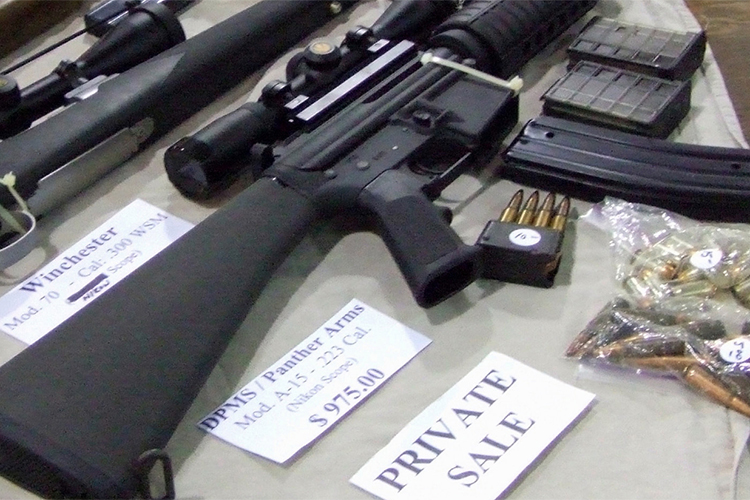Twenty years after Columbine shooting, still ‘no quick road to prevention’
UC Berkeley criminologist Franklin Zimring says school shootings have spiked since 1999, but progress is slow to prevent these tragedies.

April 19, 2019

Semi-automatic weapons like this one were the weapons of the Columbine High School shooters. (Photo by Garen Wintemute)
Saturday is the 20th anniversary of the Columbine High School massacre in Colorado, a seminal event in American school history.
On April 20, 1999, 12th-graders Eric Harris and Dylan Klebold used semi-automatic weapons and shotguns to murder 12 students and one teacher before they committed suicide.
In the two decades since, school shootings have spiked, with some of the deadliest occurring at Virginia Tech University in 2007, Sandy Hook Elementary School in Newtown, Conn., in 2012, and Marjory Stoneman Douglas High School in Parkland, Fla., in 2018.
Franklin Zimring, a criminologist and professor of law at UC Berkeley, has been monitoring the shootings and the history surrounding them. He says that what’s changed is the motif — instead of students shooting students, more often it is outsiders shooting students.
And that what’s the same is the lack of advancement to end these tragedies.
“The last two decades have been a very significant and newsworthy period,” Zimring says. “But not in terms of progress — either in prevention of such shootings or in response to them. Columbine was, until Parkland (17 were killed), the single most destructive K-12 school shooting episode.
“There is no sense in the 20 years since Columbine in which mass shooting episodes are less of a concern in American life.”
Shootings at schools were on the rise even before Columbine. From 1997 to 1999, there were deadly ones in Pearl, Miss., West Paducah, Ky., Jonesboro, Ark., and Springfield, Ore., among others. What none of those shootings had was a national television audience. Columbine did.
“For that reason, it was an extraordinarily focusing event,” Zimring says.
“Between 1997 and 1999, recurrent school shootings were all peer shootings. There were seven or eight of them, but they were focused on middle schools, and usually there were other people’s guns involved. The victims were based on the citizenship of the educational institutions.”
For a few years after Columbine, the number of shootings seem to decline. But starting with Sandy Hook, a grim evolution began to take place.
“Sandy Hook and Parkland … weren’t peer shootings,” Zimring says. “The victims were still students — kindergartners and first-graders at Sandy Hook and high schoolers at Parkland — but the shooters weren’t peers.”
Adam Lanza, the Sandy Hook shooter, had attended the school more than a decade before his spree. Nikolas Cruz, the accused Parkland shooter, had been expelled from the school.
What that has meant, Zimring suggests, is that schools now can seem more targeted than ever.
“What we have now is a still-recurring phenomenon,” he says, “and it’s one where we are less confident of being able to isolate which institutions are the targets and which populations have to be most concerned. And it’s more difficult to isolate and identify those who might be potential offenders.
“We can take some practical steps to limit damage. We know how to lock doors. We are a little better at summoning help, but those are damage control steps. We still have no quick road to effective prevention. Lockdowns started after Columbine, and they are becoming broadening events. It used to be lockdowns were for big kids. Now, they can be for all kids.”
Zimring notes that those investigating Columbine concluded that locking doors and calling law enforcement were not done well that day, possibly leading to the high death count and number of injuries. In addition to the 13 deaths, the shootings wounded 21, and another three persons were hurt attempting to escape.
“Where does this leave us?” Zimring asks rhetorically. “School security has become a permanent issue, so responding to shooters on school premises has become a policy issue. And after Sandy Hook, the focus has had to broaden. As long as you could focus on secondary and high school students, that was one thing. But when the threat includes first-graders, then all of a sudden, every school has to concern itself as a potential target.
“School shootings were always a question of when, rather than if. And today, that question remains the same, except that what we have to prepare for and defend ourselves from is a much broader set of vulnerabilities.”